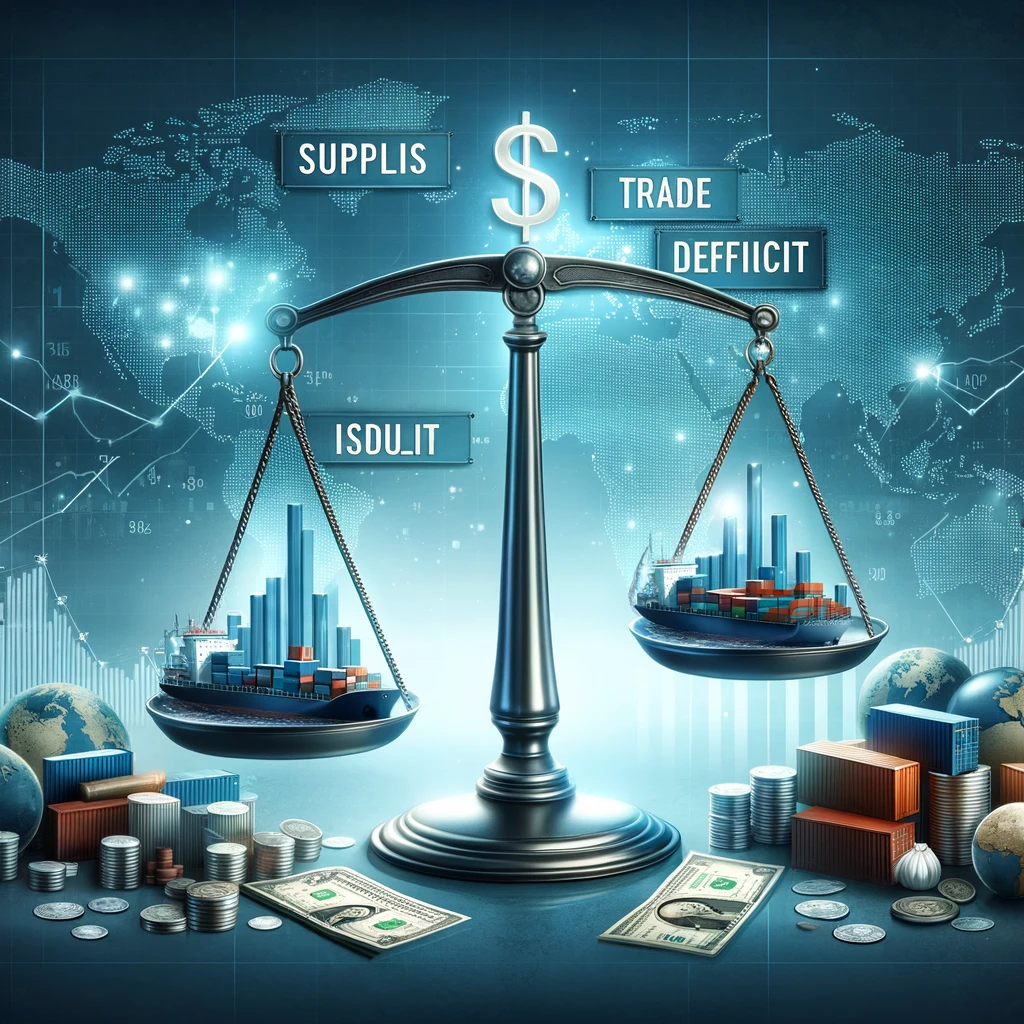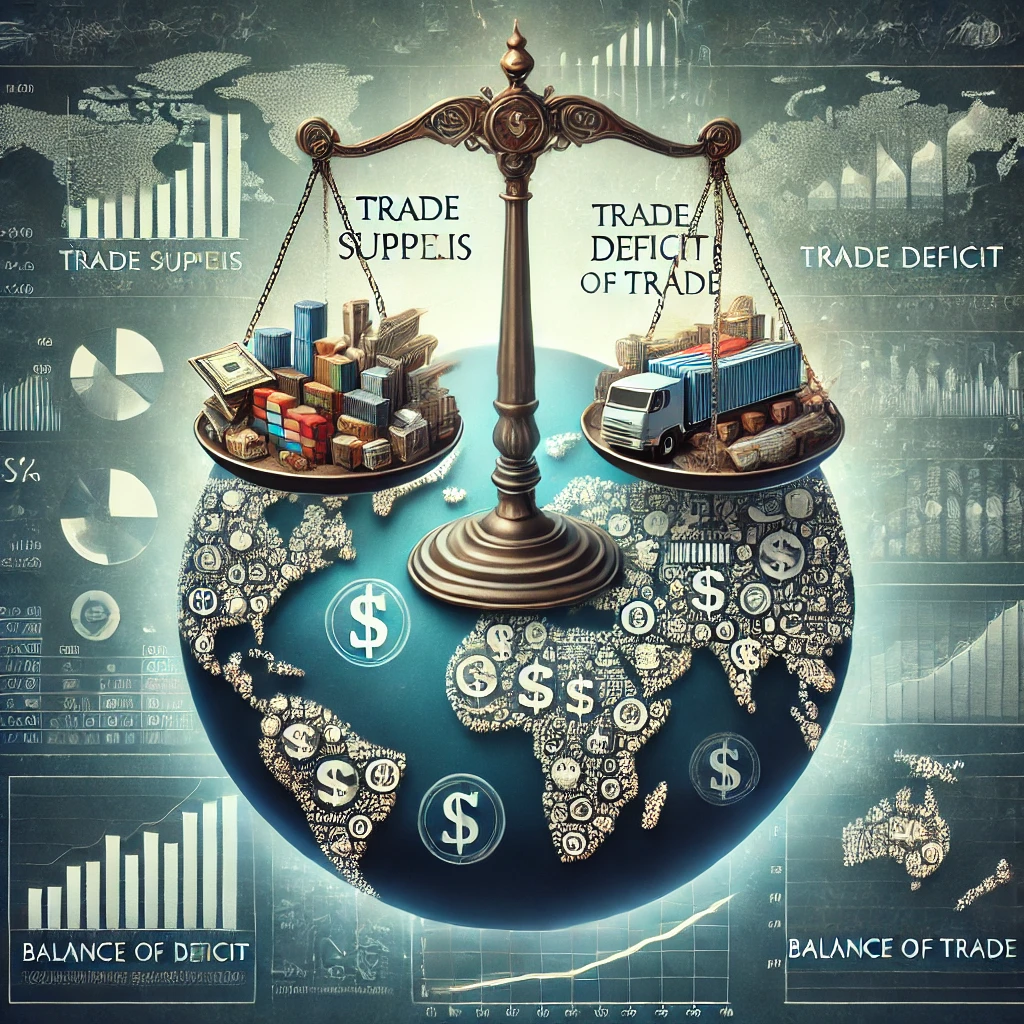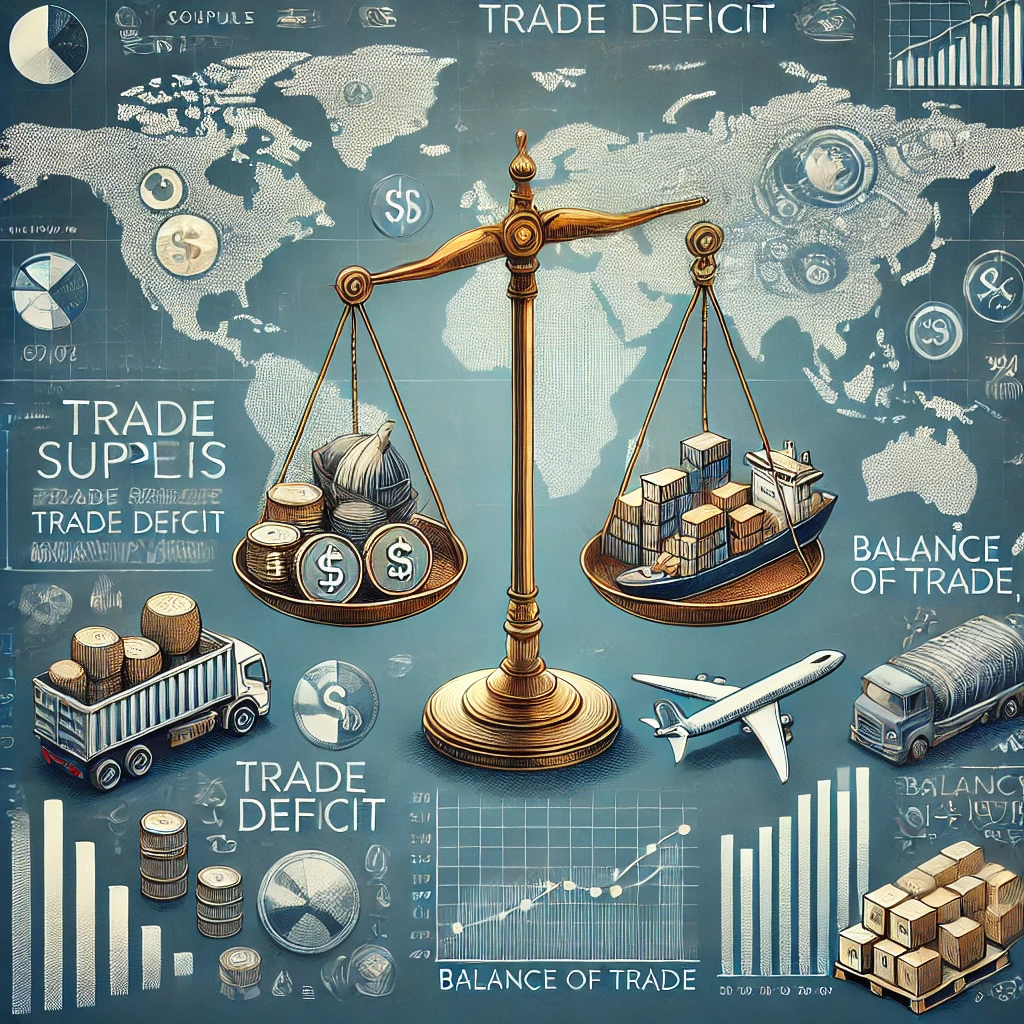Understanding Trade Surplus, Trade Deficit, and Balance of Trade: A Comprehensive Guide

What is Balance of Trade?
The balance of trade (BOT), also known as the trade balance, is a crucial economic indicator that measures the difference between a country’s exports and imports over a specific period.
Key Points:
- It’s a component of a country’s balance of payments (BOP)
- Typically measured quarterly or annually
- Can be calculated for goods (merchandise), services, or both
The Balance of Trade Formula:
BOT = Value of Exports – Value of Imports
Understanding Trade Surplus and Trade Deficit
The balance of trade can result in either a trade surplus or a trade deficit.
Trade Surplus
A trade surplus occurs when a country exports more goods and services than it imports.
Characteristics of a Trade Surplus:
- Positive balance of trade
- Net inflow of domestic currency from foreign markets
- Often seen as a sign of economic strength
Trade Deficit
A trade deficit, also known as a negative balance of trade, occurs when a country imports more goods and services than it exports.
Characteristics of a Trade Deficit:
- Negative balance of trade
- Net outflow of domestic currency to foreign markets
- Often perceived as a sign of economic weakness, though this is not always the case
The US Trade Deficit: A Case Study
The United States has consistently maintained a trade deficit for several decades, making it a significant topic of economic and political discussion.
Key Facts about the US Trade Deficit:
- Persistent since the 1970s
- Largest bilateral trade deficit is with China
- Affected by factors such as consumer spending, exchange rates, and global economic conditions
Implications of the US Trade Deficit:
- Increased foreign ownership of US assets
- Potential impact on domestic manufacturing and jobs
- Subject of ongoing trade policy debates

Trade Imbalance: Causes and Effects
A trade imbalance occurs when there’s a significant difference between a country’s exports and imports.
Common Causes of Trade Imbalance:
- Exchange rate fluctuations
- Differences in production costs between countries
- Trade policies (tariffs, subsidies, etc.)
- Variations in economic growth rates
- Consumer preferences for domestic or foreign goods
Effects of Trade Imbalance:
- Currency valuation changes
- Shifts in domestic employment patterns
- Potential for trade disputes or negotiations
Imports More Than Exports: Understanding Trade Deficits
When a country consistently imports more than it exports, it experiences a trade deficit. This situation can have various implications for the economy.
Potential Consequences of Persistent Trade Deficits:
- Increased national debt
- Pressure on currency value
- Dependence on foreign investment
- Potential for job losses in import-competing industries
Potential Benefits of Trade Deficits:
- Access to a wider variety of goods and services
- Lower prices for consumers
- Incentive for domestic industries to increase competitiveness
The Balance of Trade in a Global Context
In an interconnected global economy, one country’s trade surplus is another’s trade deficit. Understanding this relationship is crucial for grasping international economic dynamics.
Global Trade Balance:
- The sum of all countries’ trade balances should theoretically be zero
- In practice, discrepancies occur due to measurement errors and timing differences
Major Trade Relationships:
- US-China trade imbalance
- Eurozone’s trade interactions with the rest of the world
- Oil-exporting countries’ trade surpluses
Measuring and Reporting Trade Balances
Accurate measurement and reporting of trade balances are essential for economic analysis and policy-making.
Common Metrics:
- Merchandise trade balance (goods only)
- Services trade balance
- Current account balance (includes trade balance plus net income and direct payments)
Reporting Bodies:
- National statistical agencies
- International organizations (IMF, World Bank, WTO)
Trade Balance and Economic Policy
Governments and central banks often consider the trade balance when formulating economic policies.
Policy Tools Affecting Trade Balance:
- Monetary policy (interest rates, money supply)
- Fiscal policy (government spending, taxation)
- Trade policy (tariffs, quotas, trade agreements)
- Exchange rate policy

Criticisms and Limitations of Trade Balance as an Economic Indicator
While widely used, the trade balance has its critics and limitations as an economic indicator.
Criticisms:
- Doesn’t account for the quality of goods and services
- Fails to capture the full value of global supply chains
- Can be distorted by large multinational corporations’ internal transactions
Limitations:
- Doesn’t directly measure economic well-being or standard of living
- Can be affected by factors outside a country’s control (e.g., global commodity prices)

The Future of Trade Balances
As the global economy evolves, so too will the nature and importance of trade balances.
Emerging Trends:
- Increasing importance of services trade
- Impact of digital trade and e-commerce
- Role of global value chains in complicating trade balance calculations
Challenges:
- Measuring intangible assets and digital goods
- Adapting to changing patterns of global production and consumption
- Addressing persistent global imbalances
Conclusion
Understanding trade surpluses, trade deficits, and the overall balance of trade is crucial for comprehending the complexities of the global economy. While these concepts can provide valuable insights into a country’s economic performance and international competitiveness, they should not be viewed in isolation. Factors such as economic growth, employment rates, inflation, and overall quality of life must also be considered for a comprehensive assessment of economic health.
As the global economy continues to evolve, particularly with the rise of digital trade and services, the way we measure and interpret trade balances may need to adapt. Policymakers, economists, and business leaders must stay informed about these changes to make effective decisions in an increasingly interconnected world.
Whether a country has a trade surplus or deficit, the key lies in sustainable economic practices that promote long-term growth, innovation, and improved living standards for its citizens. By understanding the nuances of trade balances, we can better navigate the complex landscape of international economics and work towards a more prosperous global economy.
